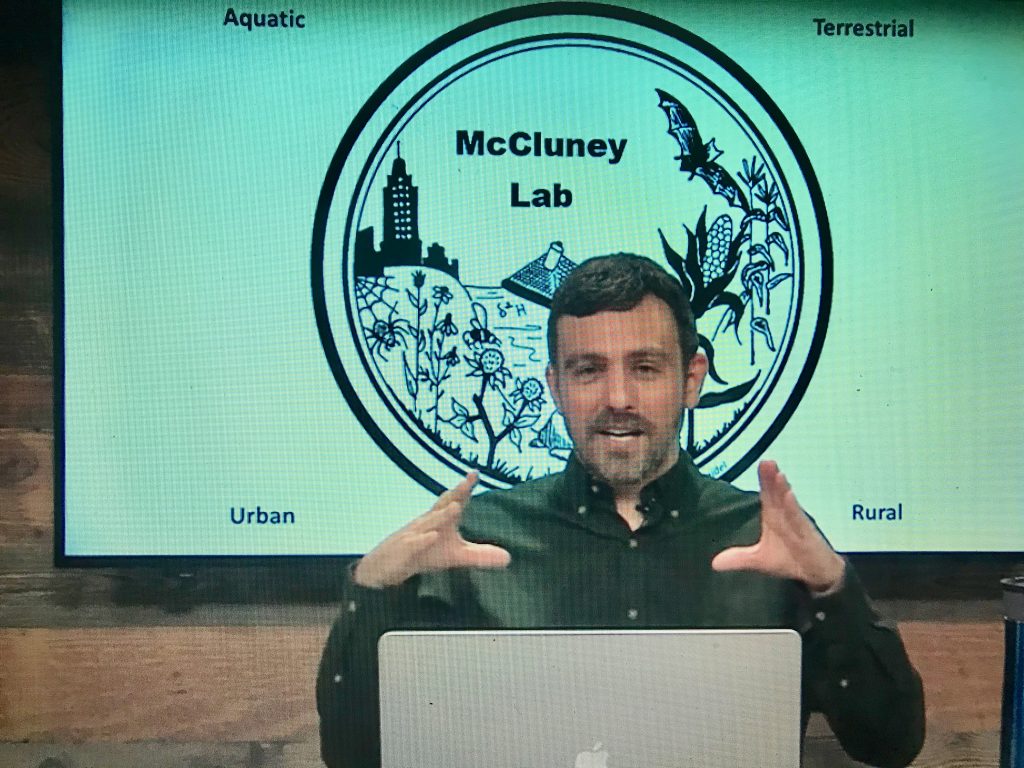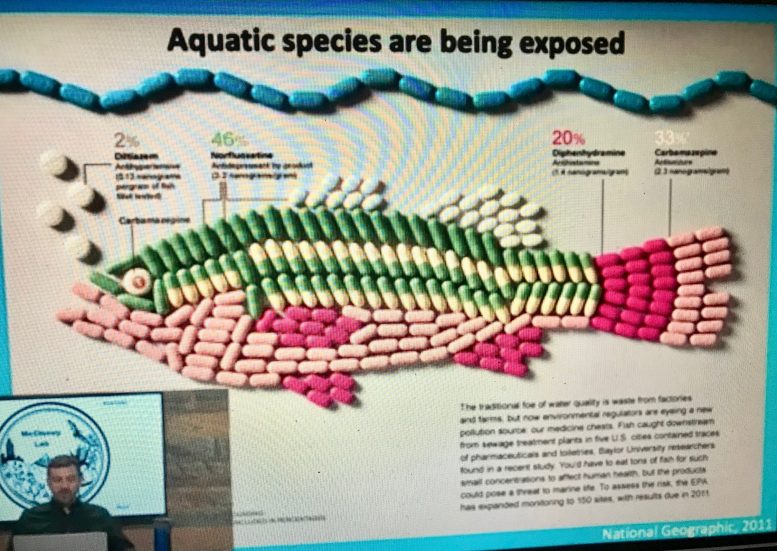By DAVID DUPONT
BG Independent News
The amount and variety of drugs humans are imbibing are increasing.
They serve a variety of functions – killing bacteria, pain relief, birth control, or just the buzz from a cup of Joe.
Once the drugs have run through our system and are excreted, they continue to exist.
During the most recent Science Café, “Medicated Streams,” from Bowling Green State University, Professor Kevin McCluney, along with a panel of colleagues and a graduate student, discussed the emerging research on the pharmaceutical pollution.
The systems involved are complicated the panelists agreed, and more research needs to be done.

McCluney’s lab is positioned to handle the work. He studies both the organisms in bodies of water and those along the shores. He studies both urban and rural systems.
The impact of substances can be mitigated, he said, if they are diluted enough. But humans are putting out too much.
A graph showed since 1955 the rapid increase in the number of pharmaceuticals on the market, as well as their increasing consumption.
And water treatment plants can only do so much to reduce their presence.
These drugs have a direct effects on fish, McCluney said.
An illustration show a male flathead minnow, who looked more like a female, the result of exposure to hormones.
Caffeine, Benadryl, heartburn medications, and, increasingly, antidepressants have been shown to reduce the metabolism of algae and microbes at the bottom of streams. “This is the base of the food web,” he said.
Duck-billed platypuses and fish can have high concentrations of anti-depressants in their systems, McCluney said.
Invertebrates in the water consume these microbes. And when those invertebrates metamorphize into emergent insects such as may flies and midges, they are consumed by spiders, bats, and birds. And traces of those drugs are found later in those creatures.
Duck-billed platypuses and fish can have high concentrations of anti-depressants in their systems, McCluney said.
Caffeine, he said, is shown to reduce phosphorus in the water bed microbes, and this can mean a reduction in the insects that need it.
Melanie Marshall, a Wright State faulty member who worked in McCluney’s lab while earning her doctorate, said scientists are not sure how different microbes break down caffeine. Caffeine doesn’t last that long in the system, not more than six days. But it is added “so consistently that it seems to be there all the time.”
Louise Stevenson, a former BGSU professor now a researcher with the Oak Ridge Lab, said estrogens “can be very destructive. … If an organism cannot reproduce they’re out of luck.”
Alessia Saul, a graduate student in McCluney’s lab, is doing studies on what effect PFOS, chemicals used to manufacture non-stick pans, have.
Research indicates they are endocrine system disruptors and can also be liver toxins.
She’s in the middle of doing research on their impact on mosquito development. Preliminary results indicate while they may inhibit mosquitos at the early stages those that survive, metamorphize much more quickly.
“There’s a lot a ways these chemicals can move through the system,” Stevenson said. “Figuring out where they end up and targeting those organisms is very important.”





